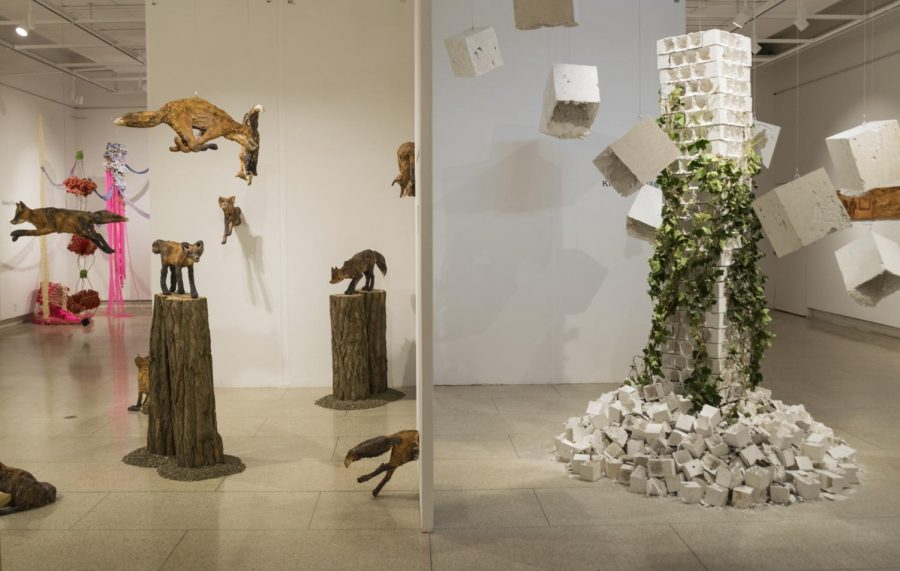The students in Film Studies 165 know that writing, directing and filming movies isn’t easy. Taurra SunEagle’s group argued daily: once for 20 hours before compromising, rewrote a script after spending three weeks working on it, filmed both in the rain and at 2 a.m., and lost every single one of their DVD tapes throughout the semester.
Now, however, the junior and her classmates are finally ready to present their work to the campus in a screening at 7:30 p.m. on Friday, Dec. 7, in Kimball Auditorium (doors open at 7 p.m.).
This is the eighth year that film studies Professor Robert Sickels has offered the Introduction to Filmmaking course, and he says it’s definitely his most enjoyable course to teach.
“Filmmaking is like writing; most anyone can be taught the technical skills to do it competently, but utilizing that skill-set to create a novel is another thing entirely. So the hardest part for me is trying to teach my students to engage in their craft artistically. I don’t want them to act like mainstream filmmakers. They should make what they want, not what they think people expect them to make,” said Sickels.
In his experience, students are so influenced by what they’ve seen in films that he has to set up rules to prevent them from falling into predictable pathways.
“When I first started teaching this course, every single movie had a character die at the end,” said Sickels. “That’s now a rule. No death, no violence.”
For the most part, however, the students are free to create their own films.
“Professor Sickels teaches us the techniques: editing software, lighting, camera angles, working with actors,” said SunEagle. “That isn’t anything compared to the work outside of class. That’s where I learned everything about filmmaking.”
The class was divided into three groups to work with: although Sickels changed the groups around halfway through the semester.
“They might not always like working with everyone in their group, but that’s as important as anything else in the class,” said Sickels.
The groups each made four films during the semester: a “stop and start” film with no computer editing, a silent film, a five-minute dialogue film and a 10-minute movie with no other requirements.
“At the screening, the films are going to be shown in the order they were assigned,” said SunEagle. “People will really be able to see the progression.”
One of the most challenging aspects of the course for students was adapting and compromising their own artistic opinions while working in groups.
“We’d deliberate over scripts for hours, but it also kept us from being careless,” said junior Hayley Young.
“Everyone had very different artistic visions. It was frustrating at times, but that’s what the real world of filmmaking is like. In the process, my own artistic vision has become stronger through not being able to do exactly what I want, and I think that has been a very valuable learning experience.”
Both SunEagle and Young agreed that the course has changed the way they view films for entertainment.
“I can’t just sit down and enjoy a movie,” said SunEagle. “I’m constantly analyzing and critiquing. I recently watched ‘The Godfather’ and spent the entire movie thinking about what I would change.”
“It’s a blessing and a curse,” said Young. “This class has given me the knowledge to be able to say, ‘I’d do this differently.'”
While difficult at times, both students said the class was one of the best they’ve taken at Whitman.
“The most rewarding part is seeing something I’ve done on screen, something I’ve worked so hard on perfecting,” said Young.





